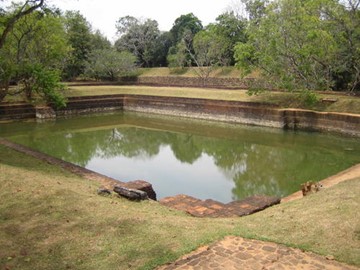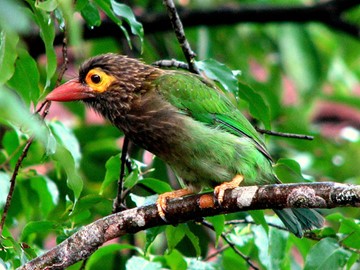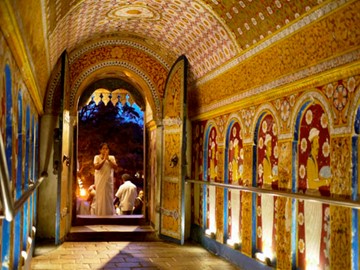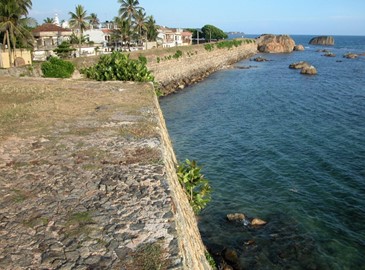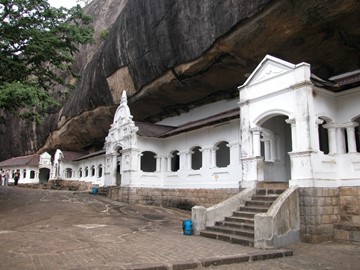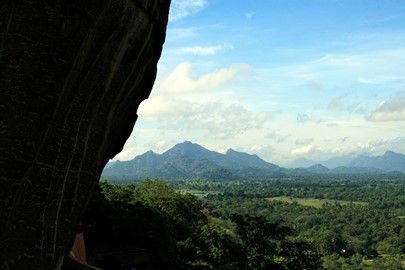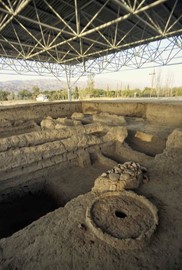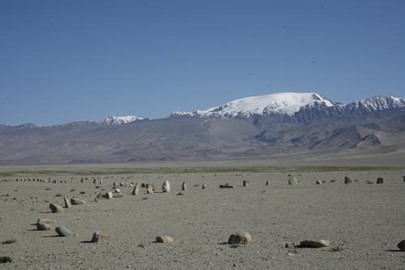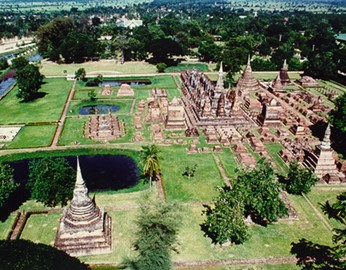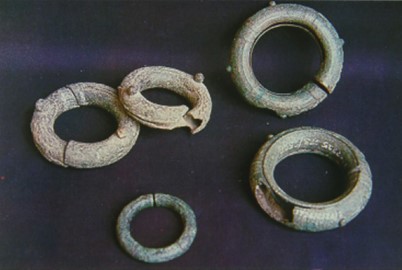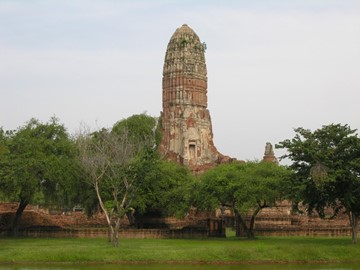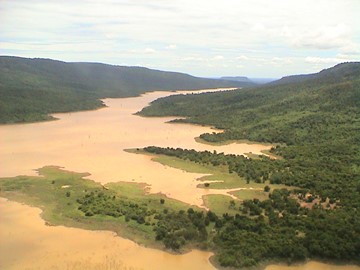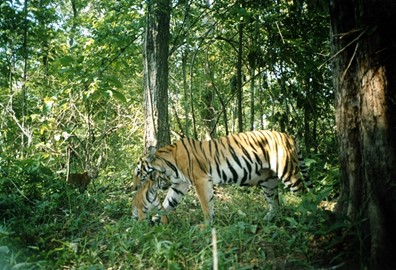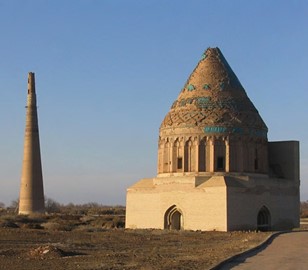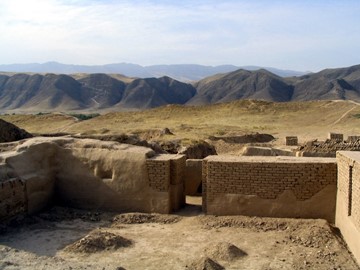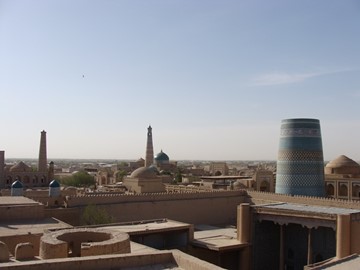region :: asia and the pacific
Sigiriya
Sigiriya, a UNESCO World Heritage site in Sri Lanka, is an ancient rock fortress renowned for its historical and architectural significance. Built in the 5th century by King Kashyapa, it features a massive rock column rising dramatically from the surrounding landscape, topped with a palace complex. The site is famous for its well-preserved frescoes, intricate water gardens, and the iconic Lion Gate, reflecting advanced engineering and artistic mastery of the era. Today, it stands as a testament to Sri Lanka... Read More
Sinharaja Forest
Sinharaja Forest, a UNESCO World Heritage site in Sri Lanka, is a biodiverse tropical rainforest renowned for its rich ecosystem. It serves as a habitat for numerous endemic species, including rare birds, mammals, and plants, making it a critical conservation area. The forest’s lush canopy and unique flora attract researchers and nature enthusiasts alike. Its global significance lies in its role as a living testament to the island’s ecological heritage.
Kandy
Kandy, a UNESCO World Heritage site in Sri Lanka, is a historic city renowned for its cultural and spiritual significance. It served as the last capital of the Sinhala kings, preserving a rich legacy of traditions and architecture. The city is home to the Temple of the Tooth Relic, one of Buddhism's most sacred shrines, housing a tooth of the Buddha. Kandy's vibrant festivals, notably the Esala Perahera, attract visitors with their elaborate processions and ancient rituals.
Galle
The Old Town of Galle, a UNESCO World Heritage site in Sri Lanka, is a well-preserved colonial fortress showcasing a blend of European and South Asian architectural influences. Built by the Portuguese in the 16th century and later expanded by the Dutch, it features sturdy ramparts, historic buildings, and charming streets that reflect its rich past as a key trading port. Today, it stands as a living testament to the island's colonial history, attracting visitors with its cultural significance and scenic coa... Read More
Golden Temple of Dambulla
The Golden Temple of Dambulla, a UNESCO World Heritage site in Sri Lanka, is a remarkable cave temple complex dating back to the 1st century BCE. This sacred site features five caves adorned with over 150 statues of Buddha, intricate murals, and ancient rock paintings that showcase a blend of religious and artistic heritage. The temple, also known as Dambulla Rock Temple, served as a refuge for King Valagamba during his exile and remains a significant pilgrimage destination today. Its well-preserved rock-cu... Read More
Central Highlands
The Central Highlands, a UNESCO World Heritage site in Sri Lanka, is renowned for its breathtaking biodiversity and stunning landscapes. This protected region encompasses montane forests, grasslands, and rugged peaks, harboring a rich array of endemic flora and fauna, including rare species like the Sri Lankan leopard and purple-faced langur. The area also holds cultural significance with ancient tea plantations and colonial-era architecture, reflecting its historical role in the island's tea industry. Its ... Read More
Sarazm
Sarazm, a UNESCO World Heritage Site in Tajikistan, is an ancient proto-urban settlement dating back to the 4th millennium BCE, showcasing the early development of human civilization in Central Asia. This archaeological site highlights a thriving Bronze Age community engaged in agriculture, metallurgy, and trade, with evidence of cultural and commercial connections stretching from Turkmenistan to the Indus Valley. Discovered in 1976 and excavated starting in 1977, Sarazm offers a glimpse into a sophisticate... Read More
Tajik National Park
Tajik National Park, a UNESCO World Heritage site in Tajikistan, is renowned for its stunning natural beauty and rich biodiversity. The park features dramatic mountain landscapes, including some of the highest peaks in Central Asia, alongside pristine lakes, rivers, and glaciers. It serves as a critical habitat for rare species like the snow leopard and Marco Polo sheep, making it a vital conservation area. This protected region also holds cultural significance, with ancient archaeological sites and traditi... Read More
Sukhothai
Sukhothai, a UNESCO World Heritage site in Thailand, is an ancient city renowned for its historical and cultural significance as the first capital of the Siamese Kingdom in the 13th and 14th centuries. The site features well-preserved ruins, including elegant temples, Buddha statues, and intricate stupas, showcasing the distinctive Sukhothai architectural style that influenced Thai art and culture. It is celebrated as the birthplace of Thai civilization, with its name translating to 'Dawn of Happiness,' ref... Read More
Ban Chiang
Ban Chiang, a UNESCO World Heritage Site in Thailand, is a significant prehistoric archaeological site dating back to 1495 BC, showcasing the earliest evidence of farming, wet-rice agriculture, and bronze tool-making in Southeast Asia. Discovered in 1966, it marks a pivotal stage in human cultural, social, and technological evolution, with findings like red-painted pottery and metal artifacts highlighting a sophisticated early civilization. Designated in 1992, the site features a museum displaying these anc... Read More
Ayutthaya
Ayutthaya, a UNESCO World Heritage site in Thailand, is a historic city founded in 1350 that served as the kingdom's capital until its fall in 1767. Renowned for its impressive ruins, including ancient temples, palaces, and statues, it showcases a blend of Khmer, Sukhothai, and local architectural styles. The site reflects the region's rich cultural and historical significance, drawing visitors to explore its well-preserved remnants and serene riverside setting.
Khao Yai Forest
Khao Yai Forest, a UNESCO World Heritage site in Thailand, is a biodiverse tropical rainforest renowned for its rich ecosystems and stunning landscapes. It hosts an array of wildlife, including elephants, gibbons, and rare bird species, alongside cascading waterfalls and scenic trails. Recognized for its ecological significance, the forest serves as a vital conservation area and a popular destination for nature enthusiasts.
Thungyai Huai Kha Khaeng
The Thungyai-Huai Kha Khaeng Wildlife Sanctuaries, a UNESCO World Heritage site in Thailand, form a vast, pristine conservation area along the Myanmar border. Recognized in 1991, these contiguous sanctuaries encompass diverse forest types, from tropical dry forests to savannas, and host an exceptional array of biodiversity, including tigers, elephants, and numerous rare species. The rugged landscape, with folded mountains and intact river systems, offers stunning natural beauty and serves as a critical stro... Read More
Ancient Merv
Ancient Merv, a UNESCO World Heritage site in Turkmenistan, stands as a testament to millennia of human civilization, once thriving as a key stop on the Silk Road. This archaeological treasure showcases remnants of successive empires, including the Achaemenids, Parthians, Sassanids, and Islamic dynasties, with structures like mausoleums, mosques, and fortified walls. Its historical significance lies in its role as a cultural and economic hub, blending Eastern and Western influences until its decline after a... Read More
Kunya Urgench
Kunya-Urgench, a UNESCO World Heritage site in Turkmenistan, is a historic city that flourished as a major trade and cultural center along the Silk Road from the 10th to 14th centuries. Once the capital of the Khwarazmian Empire, it features remarkable architectural remnants, including the 11th-century Kutlug Timur Minaret, one of the tallest in Central Asia, and the Turabek Khanum Mausoleum, renowned for its intricate tile work and dome. The site reflects a blend of Islamic architecture and regional influe... Read More
Fortresses of Nisa
The Parthian Fortresses of Nisa, a UNESCO World Heritage Site in Turkmenistan, are the remnants of an ancient capital of the Parthian Empire, a major power from the mid-3rd century BC to the 3rd century AD. This archaeological site features two tells—Old and New Nisa—showcasing unexcavated ruins that blend traditional Parthian culture with Hellenistic and Roman influences, evident in richly decorated structures tied to domestic, state, and religious life. Strategically located at a crossroads, it served as ... Read More
Itchan Kala
Itchan Kala, a UNESCO World Heritage site in Uzbekistan, is the historic inner town of Khiva, encircled by towering brick walls that once sheltered caravans before their desert journey to Iran. This well-preserved gem showcases Central Asian Islamic architecture with notable structures like the Djuma Mosque, ornate mausoleums, and grand palaces from the 19th century, reflecting its rich cultural legacy. Recognized in 1990, it stands as a testament to the region’s historical significance along the Silk Road.... Read More
Samarkand
Samarkand, a UNESCO World Heritage site in Uzbekistan, is a historic city renowned for its stunning Islamic architecture and rich cultural legacy. Known as a crossroads of ancient trade routes, it features iconic landmarks like the Registan, a grand public square framed by intricately tiled madrasas, and the Bibi-Khanym Mosque, famed for its colossal dome. The city’s mausoleums, such as the Gur-e-Amir, showcase exquisite craftsmanship and house the tombs of notable figures, reflecting its significance as a ... Read More
Shakhrisyabz
The Historic Centre of Shakhrisyabz, a UNESCO World Heritage site in Uzbekistan, is an ancient city along the Silk Road, renowned for its cultural and political significance during the 14th and 15th centuries under the Timurid Empire. It features exceptional monuments, including the grand ruins of the Ak-Saray Palace and the Kok-Gumbaz Mosque, showcasing Timurid architectural brilliance. As the birthplace of Amir Timur (Tamerlane), it reflects centuries of secular development, though it has been listed as a... Read More
Bukhara
The Historic Centre of Bukhara, a UNESCO World Heritage site in Uzbekistan, is a remarkably well-preserved example of a Central Asian Islamic city, showcasing over a thousand years of history. Its architectural treasures include the ancient Ark Fortress, the intricately designed Kalon Minaret, and numerous mosques, madrasas, and mausoleums reflecting the city’s role as a major Silk Road hub. This living museum highlights Bukhara’s cultural and religious significance, with its traditional bazaars and labyrin... Read More
Chief Roi Mata’s Domain
Chief Roi Mata’s Domain, Vanuatu’s first UNESCO World Heritage site, inscribed in 2008, encompasses sites linked to the life and death of the last paramount chief, Roi Mata, from the early 17th century. This cultural landscape reflects his enduring legacy of social reforms and conflict resolution, preserved through oral traditions and archaeological evidence. The site, under traditional and legal protection, remains significant to local communities, who maintain its integrity and offer cultural tours to edu... Read More
Ha Long Bay
Ha Long Bay, a UNESCO World Heritage site in Vietnam, is renowned for its stunning natural beauty, featuring thousands of limestone karsts and emerald waters. This iconic seascape, dotted with dramatic islands, caves, and floating villages, showcases a unique blend of geological wonders and cultural heritage. Its biodiversity and striking landscapes make it a globally celebrated destination for travelers and nature enthusiasts.
Hué
The Complex of Hué Monuments, a UNESCO World Heritage Site in Vietnam, showcases the grandeur of the Nguyen Dynasty, which ruled from 1802 to 1945. This historic ensemble includes the fortified Citadel, the Imperial City, and the Forbidden Purple City, along with royal tombs, temples, and pagodas, all harmoniously integrated with the natural landscape. Recognized in 1993, it exemplifies eastern feudal architecture and urban planning, reflecting Vietnam’s rich cultural and political heritage. Despite wartime... Read More
Hoi An
Hoi An Ancient Town, a UNESCO World Heritage site in Vietnam, is a remarkably well-preserved trading port dating back to the 15th century. Known for its blend of local and foreign architectural influences, the town features narrow streets lined with colorful lanterns, historic wooden buildings, and ornate temples. Once a bustling hub for merchants from China, Japan, and Europe, it now thrives as a cultural landmark, offering a glimpse into its rich past through its timeless charm and serene riverside settin... Read More
My Son
My Son, a UNESCO World Heritage Site in Vietnam, is a remarkable collection of ancient Hindu temples built by the Champa Kingdom between the 4th and 13th centuries. Dedicated primarily to the deity Shiva, the site features intricately carved red-brick towers that reflect a unique blend of Indian and local architectural influences. Despite damage from time and conflict, including the Vietnam War, its well-preserved ruins offer a vivid glimpse into the spiritual and cultural history of the Cham civilization. ... Read More
